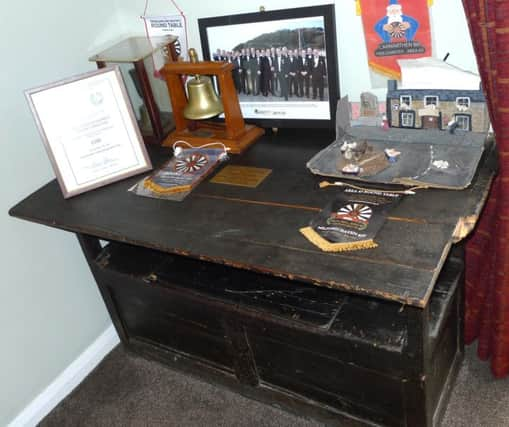NOSTALGIA: French invaders rounded up by woman with pitchfork


The submarine was dragged from the yard and taken to Germany in May 2002. Within a year she emerged as if new and has now more than 80,000 visitors a year.
•Most of us believe the last invasion of this country was in 1066. Not so. Former News defence correspondent Tim King tells me of when the French tried to get a foothold in Wales, and hopefully England, on February 22, 1797. A French flotilla of four warships appeared resulting in a disastrous defeat, with many of those captured ending in prison hulks in Portsmouth Harbour.
Advertisement
Hide AdAdvertisement
Hide AdIt was doomed because for some reason the French landed a force three miles west of Fishguard comprising 600 regulars and 800 convicts, commanded by American Colonel William Tate.


The plan was to seize Bristol then march north to capture Liverpool, but atrocious weather scotched that idea. They had to haul their weapons up steep cliffs at night and by dawn discipline broke down as they raided farms and found a stash of wine stored from a wreck and were quickly out of control. Many French soldiers scoffed under-cooked chicken from a wedding feast and were violently sick.
The ships had already been spotted from the cliff top by an old sailor who raised the alarm. A cobbler named Jemima Nicholas became an instant heroine after rounding up a dozen invaders armed with her pitchfork and locking them in Fishguard parish church – and with militia and defence forces quick to react, Colonel Tate soon realised their hopeless position. There was also evidence to support the tale that the French surrender was speeded up when they mistook a group of Welsh women dressed in traditional red shawls and black hats for British redcoats.
Less than 48 hours later the French laid down their arms. The surrender was sealed in the Royal Oak pub opposite Fishguard town hall where you can see the table on which it was signed.
Advertisement
Hide AdAdvertisement
Hide AdThe prisoners were shipped to Portsmouth and incarcerated ashore or in prison hulks. But for most their imprisonment didn’t last long and many, including Colonel Tate, were exchanged the following year for British prisoners.
The story is displayed in Fishguard Library as a 100ft-long tapestry that took four years to make to celebrate the 200th anniversary of the ‘Last Invasion’ in 1997.